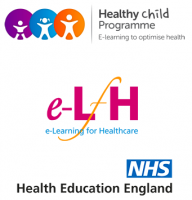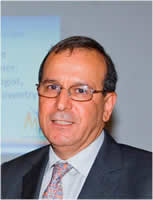Headaches course for Medical Doctors



Headache is an important and common health problem for children that may lead to school absence and educational underachievement. This session will introduce the common causes of headache, their presentation and the treatment options. This session will also help in better understanding of the impact of headache on child's social and family life.
Learning objectives
By the end of this session you will be able to:
- Describe different types of headache and their frequency in children
- Identify the warning features (red flags) of serious underlying diseases
- Describe presentations of migraine and other headaches in children including relationship to stress and emotional factors
- Assess the impact of headache on child's education, social and family life
- Outline treatment options and prevention of headache and giving appropriate advice to child, family and teachers
This session uses self assessments that help you check what you have learnt. You do not have to use them and your answers are not seen by anyone else.
Ishaq is a Consultant in Paediatrics and Paediatric Neurology at Forth Valley Royal Hospital and the Royal Hospital for Sick Children, Glasgow. He obtained a ’Doctor of Medicine’ degree from the University of Aberdeen, for his research on the epidemiology of headache and migraine in children.
Ishaq established and has run the Headache Service for Children in Glasgow since 1996. His research interests are in the epidemiology of headache, migraine and migraine equivalents, and the clinical presentations of different types of headache in children and on post-traumatic headache.
He is the chairman of the International Headache Society’s Child and Adolescent headache subcommittee, and the past chairman of the paediatric committee of the British Association for the Study of Headache.
He played part in developing the British Paediatric Neurology Association’s Childhood Headache Training courses.
Ishaq is the Editor of the first (2002) and the second (2013) editions of the now well established book ’Childhood Headache’ and he contributed to several textbooks on paediatrics and headache.

- 03_06_10 ECG III
- Posted By eIntegrity Healthcare e-Learning
- Posted Date: 2024-11-02
- Location:Online
- This third and final session about the ECG discusses cardiac conduction and arrhythmias.
- 03_06_09 ECG II
- Posted By eIntegrity Healthcare e-Learning
- Posted Date: 2024-11-02
- Location:Online
- This session follows on from ECG I and presents the ECG as an electrical map of the heart. It details the abnormalities expected with myocardial infarction and left ventricular hypertrophy.
- 03_06_08 ECG 1
- Posted By eIntegrity Healthcare e-Learning
- Posted Date: 2024-11-02
- Location:Online
- This session explains how to record an ECG, the structure of the ECG and how to interpret the results. It further explains the use of the ECG in clinical practice.
- 03_06_07 Pulmonary function test interpretation
- Posted By eIntegrity Healthcare e-Learning
- Posted Date: 2024-11-02
- Location:Online
- This session will describe some of the basic respiratory investigations, and explain the relevance of the results obtained.
- 03_06_06 An alternative approach to acid-base abno...
- Posted By eIntegrity Healthcare e-Learning
- Posted Date: 2024-11-02
- Location:Online
- This session contains a link to the BJA Education article followed by a series of self assessment multiple choice questions.<br><br>The article will open in a new window or tab depending on your browser.<br><br> CPD credits are awarded by the RCoA for the







